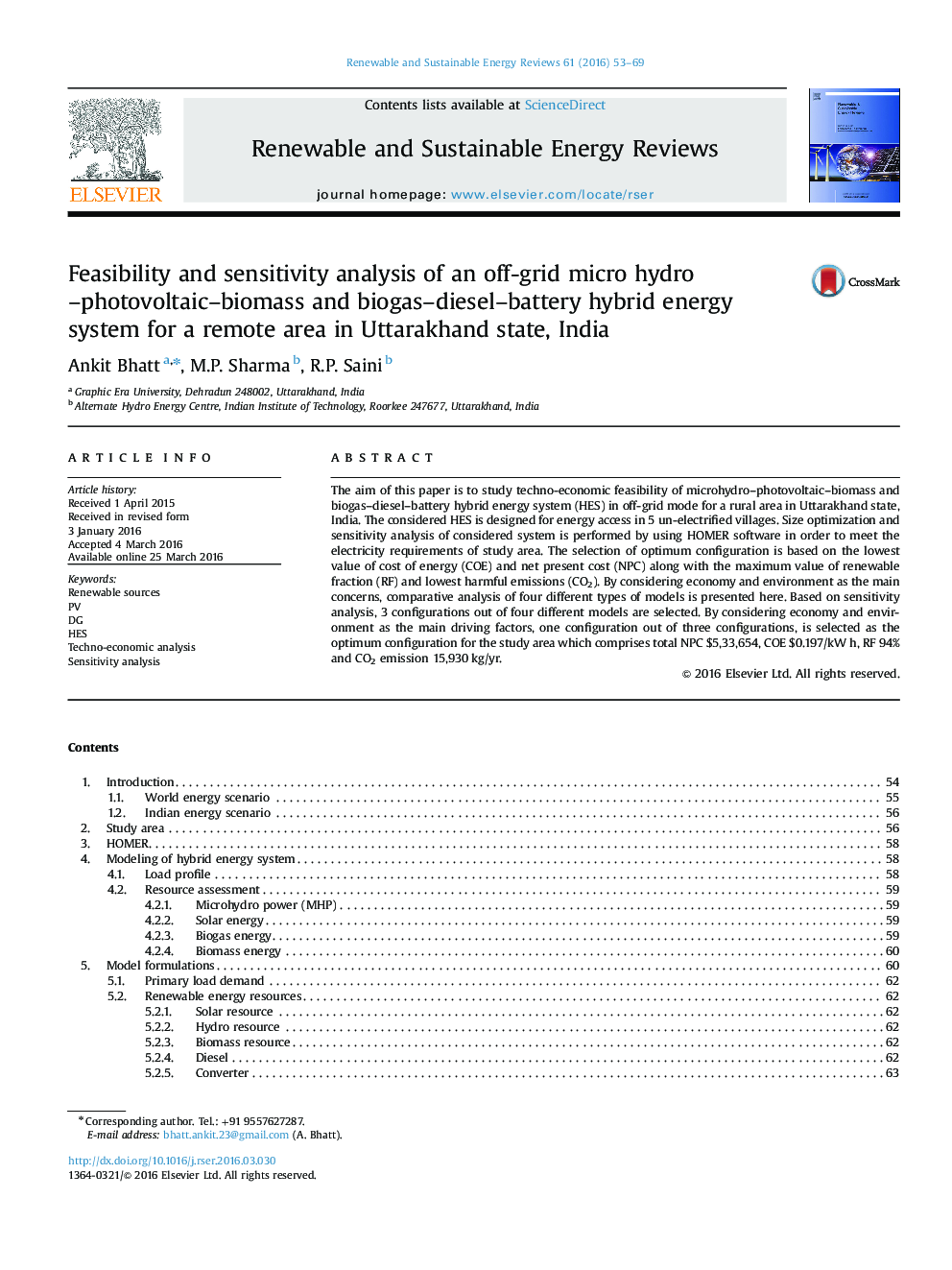| Article ID | Journal | Published Year | Pages | File Type |
|---|---|---|---|---|
| 1749782 | Renewable and Sustainable Energy Reviews | 2016 | 17 Pages |
The aim of this paper is to study techno-economic feasibility of microhydro–photovoltaic–biomass and biogas–diesel–battery hybrid energy system (HES) in off-grid mode for a rural area in Uttarakhand state, India. The considered HES is designed for energy access in 5 un-electrified villages. Size optimization and sensitivity analysis of considered system is performed by using HOMER software in order to meet the electricity requirements of study area. The selection of optimum configuration is based on the lowest value of cost of energy (COE) and net present cost (NPC) along with the maximum value of renewable fraction (RF) and lowest harmful emissions (CO2). By considering economy and environment as the main concerns, comparative analysis of four different types of models is presented here. Based on sensitivity analysis, 3 configurations out of four different models are selected. By considering economy and environment as the main driving factors, one configuration out of three configurations, is selected as the optimum configuration for the study area which comprises total NPC $5,33,654, COE $0.197/kW h, RF 94% and CO2 emission 15,930 kg/yr.
